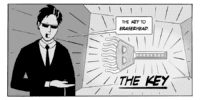Last week, I wrote the first entry of a short, three-part series dedicated to examining the dual influences of German Expressionism and Surrealism in the work of David Lynch. I noted in the previous post that we can think about Lynch’s unique combination of these two artistic styles as “Expressionist Surrealism” (my own term). While last week’s entry focused largely on the German Expressionist portion of this hybridized style, I will focus this week on the Surrealist side. In my final entry for this short series next week, I will talk about both styles together as one, and explain how Lynch effectively melds them into a single style on which he has left his own unique and lasting mark.
Surrealism is an early twentieth-century artistic movement focused largely on the process of directly accessing, and then painting/sculpting/filming images held prisoner by the Unconscious. In order to fully understand the meaning of this technique, we must understand a bit of theory advanced by a certain Dr. Sigmund Freud.
Over the course of his long and influential career, Freud argued that the human mind is divided into three distinct, but connected, arenas: the Conscious, the Pre-Conscious, and the Unconscious, each with its own particular responsibilities and traits. In order to make this clear, we’ll use an analogy. Think of the human mind as your everyday computer. The Conscious part of the mind is what you’ve got up on your computer screen right now–the stuff you’re actively thinking about, processing, and working on. Now, let’s say you need to bring up a file from yesterday in order to check on something; you move to your files folder, search for the file you need, and open it so it’s now on up on the computer. That file folder is like the Pre-Conscious–it’s full of memories and acquired knowledge you need to be able to access, although you may not be thinking about it at this very moment. Such files are easily recalled the surface of the Conscious mind, even though they may not be there at the moment. But there are some files on your computer that are so buried, so difficult to access, that you’d have trouble finding them, even with the help of the computer’s search function. In your mind, these files would be your buried memories, your fears, your shameful and hidden desires, and they are all stored deep within the Unconscious. They are sequestered there because they are too difficult for the Conscious mind to deal with or express. Out of concerns for safety or morality, society may have forced you to repress those thoughts and desires. So, those files remain deeply buried in folders within folders within even more folders. But they are big files, and they take up a lot of room on your hard drive, so at some point, you really need to ferret those files out and deal with them–even delete them–if you want the computer’s operating system to function properly. (Interestingly, Freud himself used an iceberg metaphor to describe the structure of the mind as he envisioned it–please see the diagram below).
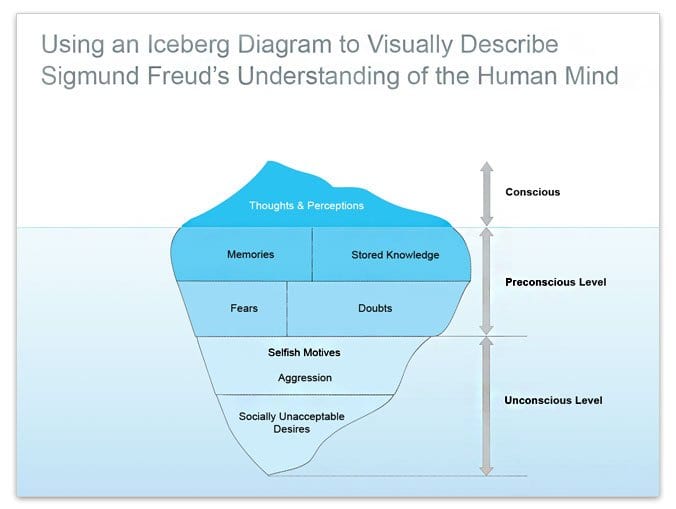
Freud and others (such as his student and, later, colleague, Carl Jung) theorized that while sleeping, our Conscious minds rest and turn over control of the mind to the Unconscious, which produces dreams from the imagery of the thoughts, memories, and desires stored in that deep, dark place. As we all know, these images are not always intelligible or even capable of being understood at all, but the images we see, Freud and Jung argued, have symbolic meanings that tie back to the forbidden things repressed by the Conscious mind.
Surrealism, as an artistic movement, seeks to gain direct access to the dream imagery of the Unconscious mind without the artist actually needing to go to sleep. As a result, Surrealist artworks have no real obligation to make sense, just as a dream any one of us might have has no obligation to make sense. The results of such attempts to access the Unconscious might look something like Persistence of Memory (1931), by Salvador Dali, perhaps the most famous and celebrated work of Surrealism (please see image below). What does the painting mean? One hundred different people will give you one hundred different answers. Even Dali would, perhaps, be at pains to explain what he created.
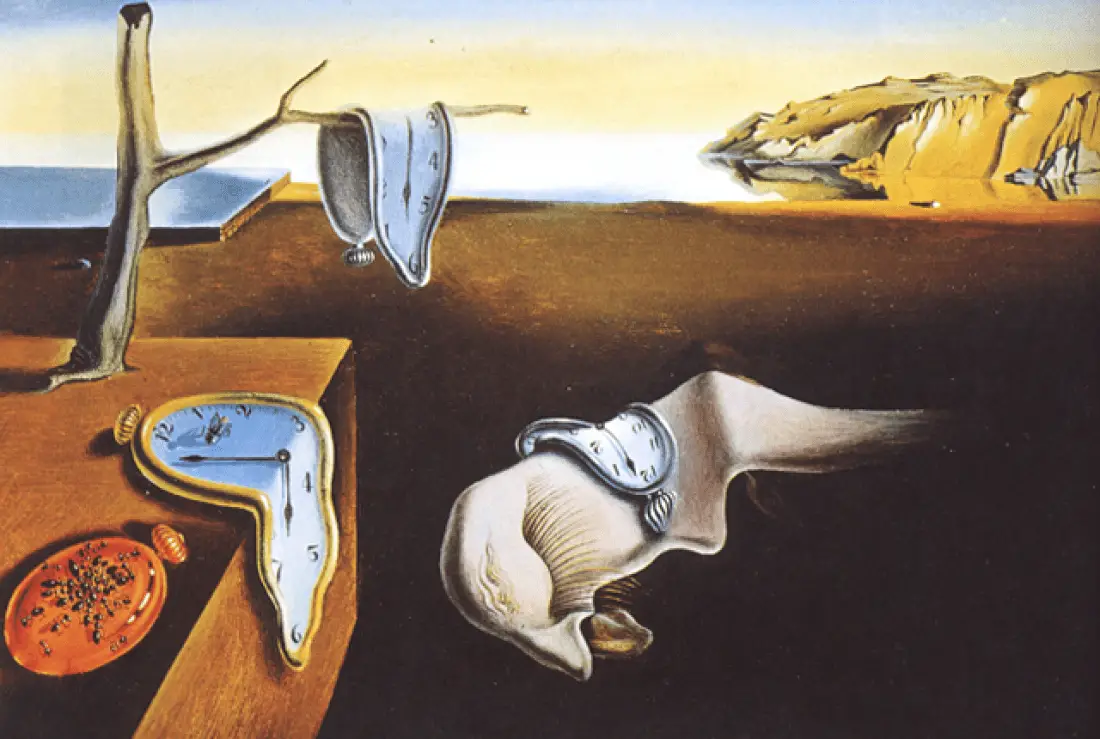
Surrealism is an artistic style more readily associated with Lynch’s name today than German Expressionism, although at the beginning of his career, with films such as Eraserhead (1977) and Elephant Man (1980), much of Lynch’s cinematography and set design might easily have been traced back to 1920s German filmmakers such as F.W. Murnau and Fritz Lang. Even given the prevalence of Expressionism in early Lynch films, however, the director’s attraction to the surreal has been manifest in his work from the very beginning of his artistic career, including his early short films (e.g., The Alphabet [1968], The Grandmother [1969], The Amputee [1974], etc.). Perhaps one of the director’s most striking surreal images occurs in Blue Velvet (1986), in which Jeffrey Beaumont (Kyle MacLachlan) finds a dismembered ear among blades of grass in an empty field (see image below). The shot seems to come straight out of a dream, especially considering how incongruous it is with normal, everyday experiences.
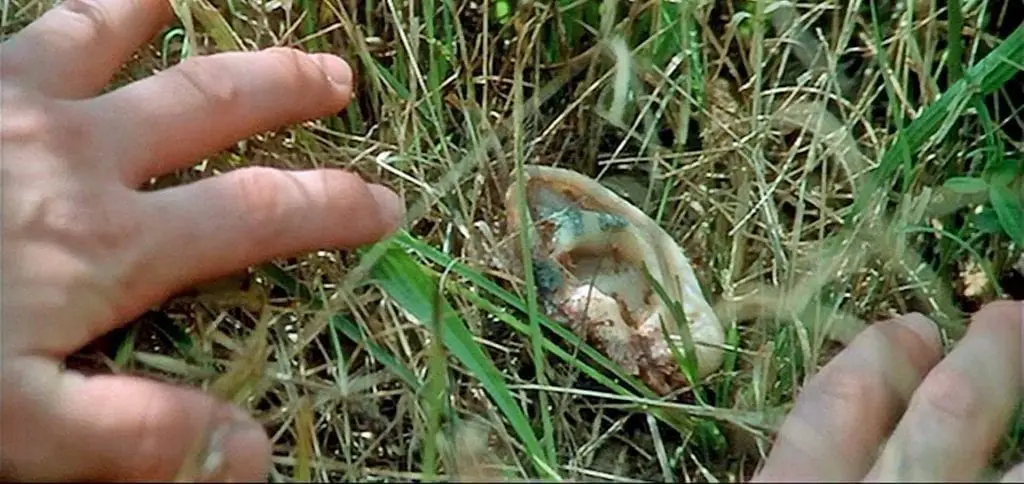
Lynch’s iconic Blue Velvet image draws directly on the work of Spanish filmmakers Salvador Dali and Luis Buñuel in their renowned Surrealist film, Un Chien Andalou (1929). In that work, the filmmakers feature a hand that seems to spawn ants from the center of its palm (see image below).
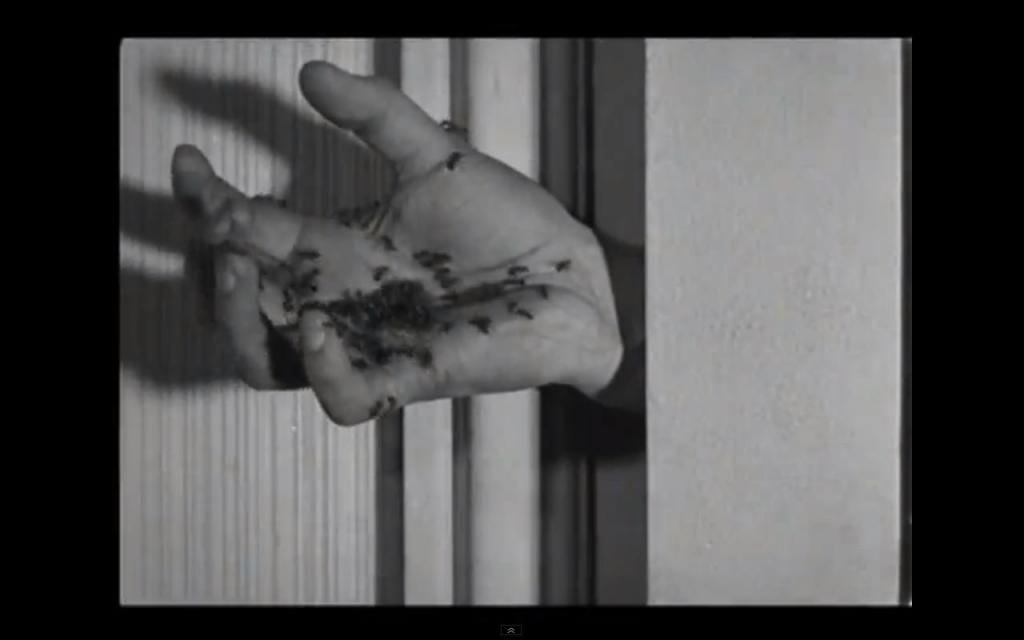
Of course, Lynch is an avowed advocate of a creative method he attributes to transcendental meditation, a state of hyper-relaxed consciousness that he claims opens his mind to the kinds of situations, stories, and images that fill his work. We might imagine that such meditative practices allow him the same kind of access to his own Unconscious as that employed by his Surrealist predecessors, Dali and Buñuel. Such access may be what accounts for the compelling Surrealist imagery seen in (for example) Twin Peaks: The Return. Alternate reality scenes, in particular, seem heavily influenced by the kinds of images one might expect to find in the paintings or films of 1920s Surrealist masters (especially the below image of MIKE [Al Strobel] and Cooper [MacLachlan] confronting the Evolution of the Arm in what may be the Black Lodge).
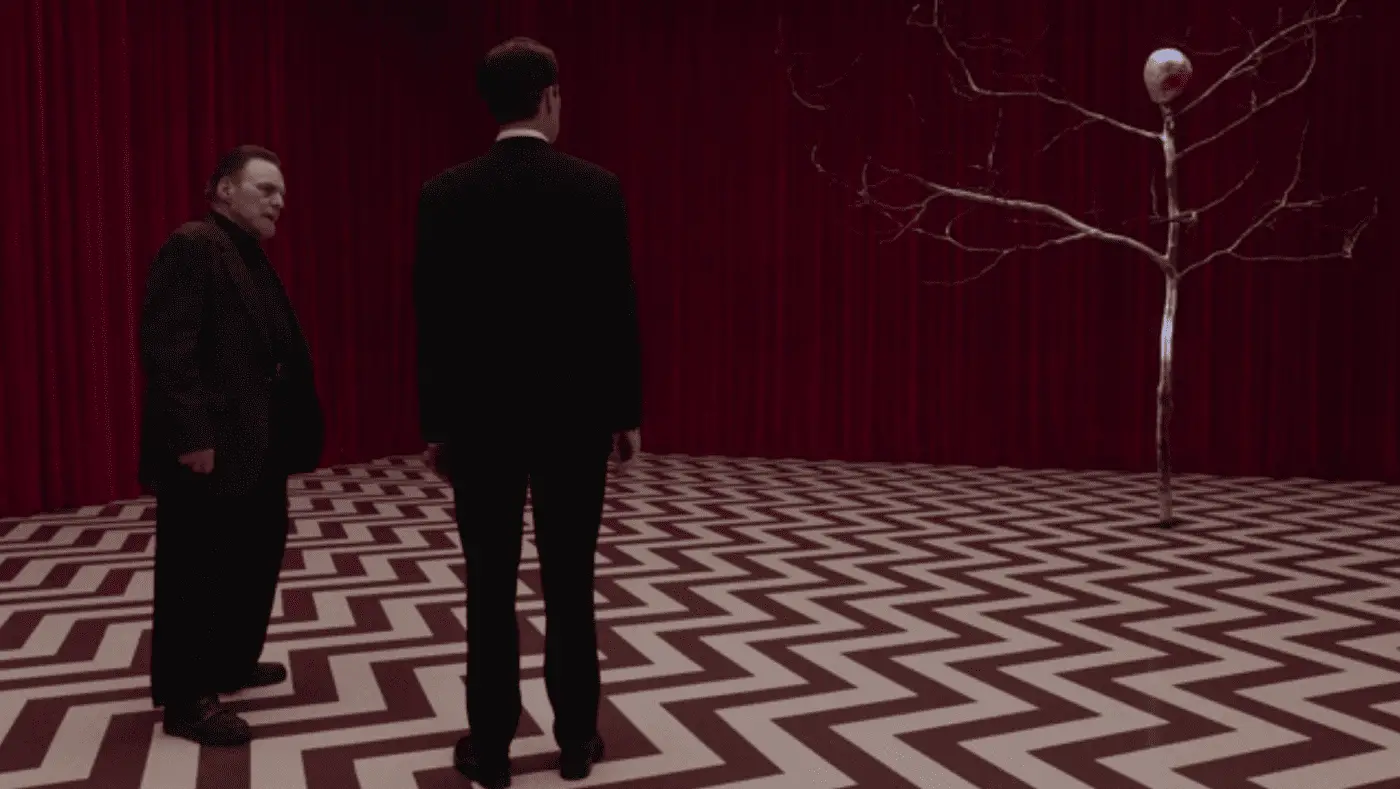
Now that our definitions and examples of both German Expressionism and Surrealism are well established, we can look forward to next week’s final entry in this short series on Lynch’s mastery of “Expressionist Surrealism.” In that forthcoming entry, I’ll focus on how Lynch combines these two styles into a hybrid style I call “Expressionist Surrealism,” and I’ll also explore how he effectively deploys this new style in Twin Peaks: The Return and in some of his other works. Until then, my friends, drink full, and descend.


